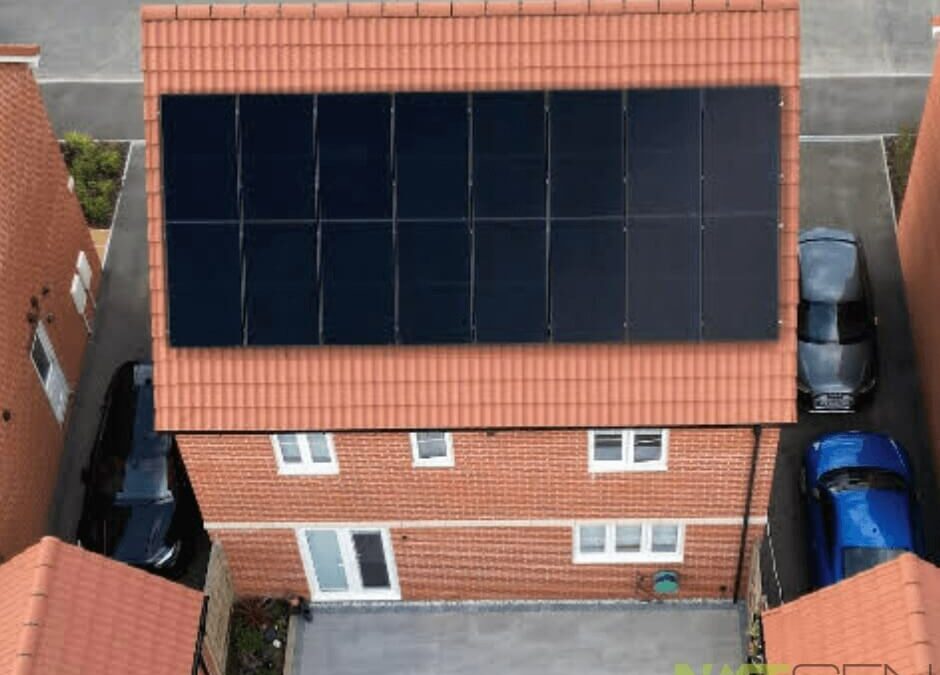☀️ The average 3-bedroom home in the UK will need 10 solar panels
☀️ Your energy usage will determine how many solar panels you need
☀️ The more efficient your solar panels are, the less of them you’ll need
Solar panels are becoming more and more affordable in the UK, which is great news – they can help you lower your energy bills, shrink your carbon footprint, and avoid energy price increases every 6 months.
But you don’t want to end up with too many or too few solar panels on your roof, especially when every penny counts during a cost of living crisis.
This post will help you figure out how many solar panels you need for your home – but you will still need to talk to an expert, like the Solar Energy Team at NXTGEN Energy, to get a precise answer.
To get a free no-obligation quote to discover how many solar panels your house would need, fill in our contact form.
How many solar panels are needed for a house?
The below table is the average solar panel cost according to your house and solar PV system array size.
| Solar PV System Size | Energy Produced | Number of Panels | Standard House size | Average cost including installation | NXTGEN PRICE FROM JUST |
|---|---|---|---|---|---|
| 1kW | 760kWh/year | 3 | 1-Bedroom Flat | £2,000 – £5,000 | Contact Us for Deals |
| 2kW | 1,520kWh/year | 6 | 1-Bedroom House | £4,000 – £7,000 | Contact Us for Deals |
| 2.5kW | 1,900kWh/year | 8 | 2-Bedroom House | £5,000 – £8,000 | £6,750 includes Battery |
| 3kW | 2,280kWh/year | 10 | 3-Bedroom House | £6,000 – £9,000 | £7,200 includes Battery |
| 4kW | 3,040kWh/year | 12 | 3/4-Bedroom House | £7,000 – £10,000 | £7,800 Includes Battery |
| 5kW | 3,800kWh/year | 16 | 4-Bedroom House | £8,000 – £11,000 | £8,500 Includes Battery |
| 6kW | 4,560kWh/year | 18 | 5-Bedroom House | £9,000 – £12,000 | Contact Us for Deals |
| 7kW | 5,320kWh/year | 20 | 5-Bedroom House | £10,000 – £13,000 | Contact Us for Deals |
For a 1-bedroom house, you would need about 6-8 solar panels, for a 3-bedroom house, you would need about 10-12 panels, for a 4-bedroom house, you would need about 12-16 panels, and for a 5-bedroom house, you would need about 18-20 panels.
These solar panels would generate enough electricity to cover about half (50%) of the average household’s annual electricity consumption – or even more, up to 70%, if you spend a lot of time at home.
Electricity consumption is measured in kilowatt hours (kWh).
A kWh is the amount of electricity that a 1,000 watt (1kW) appliance would use in an hour – for example, a 500 watt dishwasher would use 0.5 kWh in an hour or a 2,000 watt oven would use 2kW in an hour.
If you don’t have solar battery storage, you won’t be able to use all of the electricity that your solar panels produce, because it will be generated when you are not at home and you can’t use the solar energy.
But don’t worry, you can still make money from your excess solar energy by selling it back to the National Grid through the Smart Export Guarantee (SEG) scheme.
According to my calculations, the money you save from the Smart Export Guarantee (SEG) scheme and from using less National Grid electricity will pay for the cost of your solar panels in about 10 – 15 years.
How to calculate the number of solar panels you need
To find out how many solar panels you need, you need to know how much electricity you use in a single year, and then divide that by the 265 kWh that each average 350-watt solar panel can produce in a year in the UK.
You also need to check your roof size and it’s orientation (what way the roof faces), because if it’s too small or facing north, it might not be worth getting solar panels.
These steps can be difficult – but don’t worry, we have made it easy for you.
Just use the solar panel calculator below.
Enter system size, orientation, tilt angle and the cost of your system then click the ‘Calculate’ button to see the results.
Here are your Solar PV System calculation results:
Please note: these costs are estimated and based on industry averages. They are not an exact indication of how much you’ll be charged by a solar panel installer. Want a better idea of how much you’ll end up paying? Pop your details in our contact form, and talk directly to our experienced solar energy team.
1. Calculate your annual electricity usage
To work out how many solar panels you would need, you need to know how much electricity you used in the last year.
This is like knowing how many sandwiches your household eats in a week before buying a loaf of bread.
You can easily find out your annual electricity consumption by looking at your electricity bills.
If you don’t have your yearly summary or the last 12 months’ electricity bills, you can contact your energy supplier and ask them for your total electricity usage in kilowatt hours (kWh) for the last year.
You can compare your electricity usage with the table above to get an estimate of how many panels you would need to produce about the same amount of electricity that you use in a year.
For reference, a 3-bedroom house usually uses 2,700 kWh per year, according to the Ofgem website.
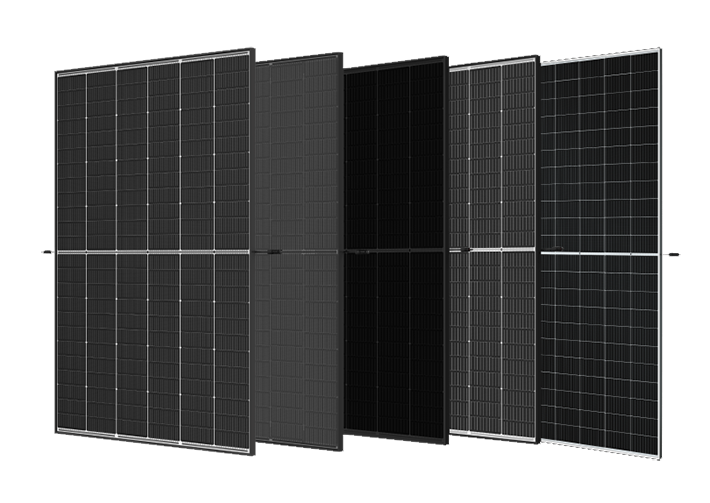
2. Work out what size panels to use
A typical solar panel has a power rating of 350W (watts).
This means that in the UK, an average solar panel can produce an average of about 265 kWh of electricity per year.
To estimate how many solar panels you need for your home, you can divide your yearly electricity consumption by 265.
For example, if your household uses 4,000 kWh of electricity per year, you can divide that by 265 and get 15 solar panels.
A general rule for the UK is that for every 1 kW of solar panels on your roof, you can generate 760 kWh of electricity per year.
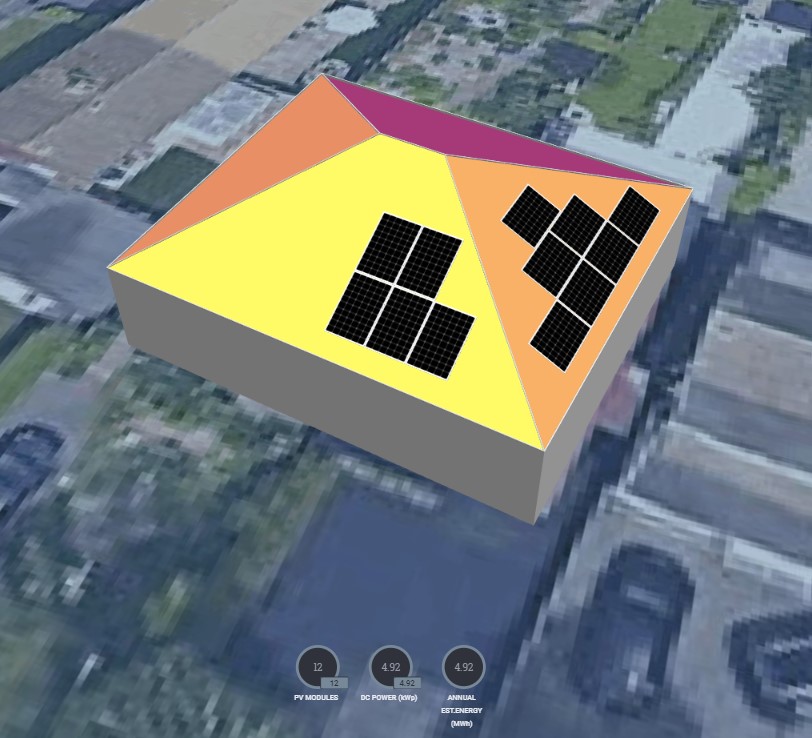
3. Find out if your roof is suitable
You need to measure your roof space or check your building plans to see how many solar panels you could fit on it.
Remember that a typical solar panel is two square metres (2m2) in size, and that north-facing roofs are not suitable for solar panels. You can learn more on our page: North vs South Facing Solar Panels: Which is best?
If your roof space is not big enough, don’t panic – you may be able to use fewer solar panels with higher power ratings like 425W or 450W. You can also install solar panels on your garage roof or in your garden.
By considering these factors, you can get a rough idea of how many solar panels you need – but you should always get a final quote from a qualified professional, like our Solar Energy Team at NXTGEN Energy.
What other factors affect how many solar panels you need?
How many solar panels you need depends not only on your electricity consumption, but also on these factors:
- Where you live
- How your roof faces
- What kind of solar panels you choose
- How efficient your solar panels are
Where you live
The amount of sunshine in your local area affects how much electricity your solar panels can generate.
Solar panels work even on cloudy days, but they produce more electricity when the sun is shining directly on them. So, if you live in a place that has less sunny days, you might need more solar panels (if you have enough roof space).
For example, let’s say you have 10 solar panels that each have a power rating of 350 watts (W). In southern England, these panels would produce about 2,978 kilowatt hours (kWh) of electricity per year. But in northern Scotland, the same panels would only produce 2,221 kWh per year.
To get the same amount of electricity from solar panels in Scotland as you would in southern England, you would typically need one to three extra solar panels or you would need solar panels with a higher rating like 450W.
How your roof faces
South-facing solar panels are the best option in the UK. They get the most sunlight hours, which means they generate more electricity than solar panels that face other directions.
According to studies that NXTGEN Energy have performed, solar panels on roofs that face east or west produce 20% to 30% less energy than south-facing ones.
So, if your roof faces east or west, you might need one to three more solar panels to get the same amount of energy or you would need solar panels with a higher rating like 450W.
What kind of solar panels you choose
The efficiency of solar panels affects how much energy they can produce on a normal sunny day in the UK.
There are two main types of solar panels for residential homes: monocrystalline and polycrystalline solar panels.
Monocrystalline panels are more efficient, with an average efficiency range of 18%-24%. Polycrystalline panels have a lower efficiency rating, with an average range of 13%-16%.
This means that you would need more polycrystalline solar panels than monocrystalline solar panels to get the same amount of energy produced.
How efficient your solar panels are
The more efficient your solar panels are, the fewer you will need to power your home.
This is because efficient solar panels can produce more energy from the same amount of sunlight.
The average efficiency of solar panels is about 20% currently, but some solar panel models can reach 24%.
So, if you opt for solar panels with 24% efficiency, you might be able to install fewer of them. This could save you money, since efficient solar panels are usually more expensive.
How big is a solar panel?
Most solar panels for homes are rectangular and about 2 square metres (2m2) in size.
They are usually 2 metres (2m) long and 1 metre (1m) wide, with a thickness of 3-5cm (1-2 inches).
But some manufacturers make smaller panels, which are good for homes with little roof space – though, they are more expensive. If you want something very compact, you can look at:
- Sharp’s NQ-R Series, which is 258.4W and is 1.29 square metres (1.29m2)
- Panasonic’s N300, which is 300W and is 1.54 square metres (1.54m2)
- SunPower’s X-Series X22, which is 370W and is 1.63 square metres (1.63m2)
You can also solve the problem of limited roof space with high-efficiency solar panels.
These premium panels are very good at turning sunlight into electricity, with conversion rates of around 20-22% (the normal rate is closer to 16-18%).
Small solar panels
Small solar panels are great for powering battery-based systems that are off the grid – like caravans and boats.
They are not usually used for houses, because they would need too many connections to make a big enough solar PV system array, which would make them too expensive.
Instead of the normal size of two square metres (2m2), these panels are usually much smaller, at 0.5 square metres (0.5m2) – but they also produce less power, of course.
The 50W panel is a common choice for small solar customers, but you can find panels from 10W to 100W, depending on your needs.
The best thing about small solar panels is their flexibility. You can mix and match their different sizes and outputs to suit your solar battery storage.
By the way, you will need a solar battery if you want to store solar energy for later, rather than just using it when the sun is shining.
Large Solar Panels
You can now get solar panels that are as big as 3.1 square metres (3.1m2) for your home.
Some companies, like Risen Energy, make panels this size that can produce up to 670W of solar power – which is about twice as much as a normal solar panel – because of their large size.
Large panels are not always more efficient, and they can be hard to fit around things on your roof, like your chimney or dormer, but they can look nicer and more even.
You don’t have to choose large solar panels, even if you have a lot of roof space or a big off-grid building to power – but sometimes it is cheaper to go big for your home.
Of course, you also have to think about the cost, and large panels are often very expensive.
That’s why they are usually made for commercial solar panel use.
How heavy are solar panels?
The average weight of residential solar panels is usually between 18kg and 20kg.
This means that a normal 10-panel solar PV system array is heavier than two average adult men.
This is a good reason to get a professional installer to help you with solar power – and also because they will install the solar panels correctly.
If you want solar panels for a vehicle or a small off-grid building, you might want to look at flexible solar panels, which can curve around a corner or over a bump, and they are also lighter, weighing between 0.8kg and 3kg.
Conclusion
Now you’re armed with all the information and practical advice you need to work out roughly how many solar panels you need for your home.
That means you’re ready to approach a solar energy professional, like NXTGEN Energy, tell them your electricity needs and roof size, and have an informed conversation about how many solar panels you’ll require.
Feeling motivated and ready to get a free no-obligation quote for a solar PV system? Want to learn more? Your best option is to talk to one of our friendly solar energy experts on 01268 928 690 or click on the ‘Enquire Now’ button below and we will help you find the right solar PV system for your garden and budget.
Frequently Asked Questions about Solar Panels for Homes
To power a typical three-bedroom house with solar energy, you would need 10 solar panels. 10 solar panels that each have a power rating of 350 watts can generate 2,645 kWh of electricity per year in the UK, on average – enough to mostly rely on solar power during the day.
A 5 kW solar array can be made with 14 solar panels that each have a power rating of 350 watts. This is a common setup for a big house with four or five bedrooms, and it can cut the electricity bills of this kind of home by 70%.
If you don’t have enough space for 14 panels, you can opt for solar panels with a higher power rating – there are many models that have ratings of 450 watts or more.
To find out how many and what power output you want your panels to have, you can use our Solar Panel Calculator UK.
To generate 10 kWh of electricity per day in the UK, on average, you would need 14 solar panels that have a power rating of 350 watts each. But your panels will produce more or less electricity depending on the weather.
When you have more power than you need, you can sell the extra to the grid through the Smart Export Guarantee (SEG Scheme.
Having too many solar panels can be a waste of money, because it will take longer to pay off your investment. You can make some money by selling the extra electricity you generate to the grid, but that is not as profitable as using it yourself – so you will delay your break-even point.
The average 3-bedroom house needs 10 solar panels. For every additional panel you install, you will add half a year to your break-even point.
The number of solar panels that can fit on a roof depends on both the roof’s size and shape. The average roof size in the UK is between 50 and 75 square metres. Roofs of this size could hold 20 to 30 solar panels.
But some roofs have things like chimneys, ridges, or electric equipment that could reduce the space for solar panels.
This is not a big problem, because the average 3-bedroom house only needs about 10 solar panels to power its home.
If you want to live off-grid, you would need about 16 solar panels with 350 W peak power output each. But that is only if you cut down your energy use by 40%, and have a solar battery and a heat pump. If you want to live off-grid without changing your electricity habits, you would need about 26 solar panels. This is more than double the number of panels that an on-grid 3-bedroom house would need.
Solar panels have a lifespan of 25 to 30 years, but that doesn’t mean they stop working after that. They’ll still generate electricity beyond 30 years, but their efficiency will gradually decline by 0.2%-0.3% each year. This is a minor drop in efficiency, so you can technically use your solar panels for a very long time.
Latest Solar Panel Installation Posts
- Why Leisure Centres Should Invest in Solar Panels
 In recent years, the concept of sustainability has become increasingly vital in various industries, including leisure centres. As the global focus shifts towards environmental conservation and renewable energy sources, leisure centres are recognizing the importance of investing in sustainable practices to reduce their operating costs and their carbon footprint. One such sustainable solution gaining traction… Read more: Why Leisure Centres Should Invest in Solar Panels
In recent years, the concept of sustainability has become increasingly vital in various industries, including leisure centres. As the global focus shifts towards environmental conservation and renewable energy sources, leisure centres are recognizing the importance of investing in sustainable practices to reduce their operating costs and their carbon footprint. One such sustainable solution gaining traction… Read more: Why Leisure Centres Should Invest in Solar Panels - Is it worth buying solar panels in Basildon, Essex?
 ☀️ Over 10,000 homes in Basildon have a solar panel system installed. ☀️ You’ll normally break even on solar panels in less than 10 years. ☀️ A 3.5kW solar panel system will cost about £7,000 on average. Solar panels are becoming more affordable and more common in the UK, with over 1.3 million households already… Read more: Is it worth buying solar panels in Basildon, Essex?
☀️ Over 10,000 homes in Basildon have a solar panel system installed. ☀️ You’ll normally break even on solar panels in less than 10 years. ☀️ A 3.5kW solar panel system will cost about £7,000 on average. Solar panels are becoming more affordable and more common in the UK, with over 1.3 million households already… Read more: Is it worth buying solar panels in Basildon, Essex? - Unveiling the Perfect Fit: How Many Solar Panels Can Your Roof Handle?
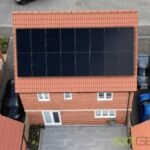 Harnessing the power of the sun is an attractive proposition for many UK homeowners. But before diving headfirst into solar energy, a crucial question arises: how many solar panels can fit on your roof? The answer, unfortunately, isn’t a simple one. It’s a captivating interplay between several factors, each one requiring careful consideration. Understanding Your… Read more: Unveiling the Perfect Fit: How Many Solar Panels Can Your Roof Handle?
Harnessing the power of the sun is an attractive proposition for many UK homeowners. But before diving headfirst into solar energy, a crucial question arises: how many solar panels can fit on your roof? The answer, unfortunately, isn’t a simple one. It’s a captivating interplay between several factors, each one requiring careful consideration. Understanding Your… Read more: Unveiling the Perfect Fit: How Many Solar Panels Can Your Roof Handle? - Powering Care with Sunshine: How Solar Panels Benefit Nursing Homes
 Nursing homes are the backbone of our communities, providing essential care for our elderly population. But keeping these facilities running smoothly requires a significant amount of energy – lighting, heating, cooling and medical equipment all contribute to a hefty energy bill. This is where commercial solar panels come in, offering a win-win solution for both… Read more: Powering Care with Sunshine: How Solar Panels Benefit Nursing Homes
Nursing homes are the backbone of our communities, providing essential care for our elderly population. But keeping these facilities running smoothly requires a significant amount of energy – lighting, heating, cooling and medical equipment all contribute to a hefty energy bill. This is where commercial solar panels come in, offering a win-win solution for both… Read more: Powering Care with Sunshine: How Solar Panels Benefit Nursing Homes - Who are NXTGEN Energy Ltd?
 NXTGEN Energy Ltd are a solar energy company based in Rayleigh, Essex, UK. They specialize in the installation of solar panels, battery storage systems, and electric vehicle chargers for homes and businesses across the UK. They are MCS certified, which means they meet the Microgeneration Certification Scheme’s standards for quality and safety. This makes them… Read more: Who are NXTGEN Energy Ltd?
NXTGEN Energy Ltd are a solar energy company based in Rayleigh, Essex, UK. They specialize in the installation of solar panels, battery storage systems, and electric vehicle chargers for homes and businesses across the UK. They are MCS certified, which means they meet the Microgeneration Certification Scheme’s standards for quality and safety. This makes them… Read more: Who are NXTGEN Energy Ltd? - Why UK Homeowners with Solar Panels Need Bird Proofing (Beyond the Basics)
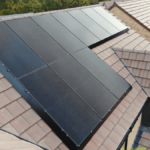 Imagine waking up to the quiet hum of your solar panels, generating clean energy to power your home. It’s a beautiful image, symbolizing lower electricity bills and sustainability. But what if a gang of birds decided the solar panels on your roof were the perfect spot for their new condo complex? Unfortunately, this idyllic scene… Read more: Why UK Homeowners with Solar Panels Need Bird Proofing (Beyond the Basics)
Imagine waking up to the quiet hum of your solar panels, generating clean energy to power your home. It’s a beautiful image, symbolizing lower electricity bills and sustainability. But what if a gang of birds decided the solar panels on your roof were the perfect spot for their new condo complex? Unfortunately, this idyllic scene… Read more: Why UK Homeowners with Solar Panels Need Bird Proofing (Beyond the Basics) - How AI could supercharge your solar panels
 Imagine stepping outside on a crisp January morning, a mug of steaming tea warming your hands. You glance at your rooftop, not with dread at energy bills, but with a mischievous grin. Why? Because the sun, that cheeky orb in the sky, is being squeezed for every juicy watt it holds thanks to your AI-powered… Read more: How AI could supercharge your solar panels
Imagine stepping outside on a crisp January morning, a mug of steaming tea warming your hands. You glance at your rooftop, not with dread at energy bills, but with a mischievous grin. Why? Because the sun, that cheeky orb in the sky, is being squeezed for every juicy watt it holds thanks to your AI-powered… Read more: How AI could supercharge your solar panels - Unprecedented growth in the renewable sector driven by solar power
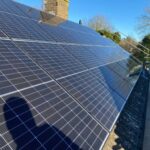 The year 2023 marked a significant milestone in the realm of renewable energy, as solar power emerged as the driving force behind a remarkable 50% surge in global capacity. This remarkable achievement was revealed in the International Energy Agency’s (IEA) Renewables 2023 report, solidifying it as the 22nd consecutive year of record growth in renewable… Read more: Unprecedented growth in the renewable sector driven by solar power
The year 2023 marked a significant milestone in the realm of renewable energy, as solar power emerged as the driving force behind a remarkable 50% surge in global capacity. This remarkable achievement was revealed in the International Energy Agency’s (IEA) Renewables 2023 report, solidifying it as the 22nd consecutive year of record growth in renewable… Read more: Unprecedented growth in the renewable sector driven by solar power - The Allure of Solar and the Pitfalls of Price
 The allure of renewable energy is undeniable. Lowering your carbon footprint while achieving energy independence – it’s a win-win proposition. However, navigating the solar investment landscape can be fraught with hidden costs, particularly when lured by the siren song of bargain-basement prices. Consider the contrasting paths of Dean and Richard, both homeowners embarking on the… Read more: The Allure of Solar and the Pitfalls of Price
The allure of renewable energy is undeniable. Lowering your carbon footprint while achieving energy independence – it’s a win-win proposition. However, navigating the solar investment landscape can be fraught with hidden costs, particularly when lured by the siren song of bargain-basement prices. Consider the contrasting paths of Dean and Richard, both homeowners embarking on the… Read more: The Allure of Solar and the Pitfalls of Price - Why Manufacturing & Logistics Businesses need to invest in Warehouse Solar Panels
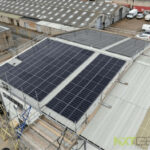 Electricity and energy consumption are major expenses for manufacturing and logistics businesses, as they need them to operate machinery, illuminate and heat their facilities, and transport their goods. Warehouse solar panels can significantly reduce these costs and enhance the company’s financial performance, while also contributing to its sustainability objectives. Installing commercial solar panels on your… Read more: Why Manufacturing & Logistics Businesses need to invest in Warehouse Solar Panels
Electricity and energy consumption are major expenses for manufacturing and logistics businesses, as they need them to operate machinery, illuminate and heat their facilities, and transport their goods. Warehouse solar panels can significantly reduce these costs and enhance the company’s financial performance, while also contributing to its sustainability objectives. Installing commercial solar panels on your… Read more: Why Manufacturing & Logistics Businesses need to invest in Warehouse Solar Panels - Advantages of Solar Panels in the UK
 Solar Power: Shining a Light on the UK’s Green Future The UK’s embrace of renewable energy is blossoming, with solar power playing a leading role. This surge reflects a national commitment to a greener, more sustainable future. But what exactly are the benefits of solar panels for UK homeowners and businesses? Let’s dive into the… Read more: Advantages of Solar Panels in the UK
Solar Power: Shining a Light on the UK’s Green Future The UK’s embrace of renewable energy is blossoming, with solar power playing a leading role. This surge reflects a national commitment to a greener, more sustainable future. But what exactly are the benefits of solar panels for UK homeowners and businesses? Let’s dive into the… Read more: Advantages of Solar Panels in the UK - Why Your Business Should Invest in Commercial Solar Panels
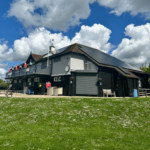 Solar panels on houses and residential properties have become increasingly common in the last year. The number of individuals seeking a more sustainable way of living continues to grow each year. However, the pursuit of a greener existence is not limited to domestic life. Investing in commercial solar panels is an excellent way to reduce… Read more: Why Your Business Should Invest in Commercial Solar Panels
Solar panels on houses and residential properties have become increasingly common in the last year. The number of individuals seeking a more sustainable way of living continues to grow each year. However, the pursuit of a greener existence is not limited to domestic life. Investing in commercial solar panels is an excellent way to reduce… Read more: Why Your Business Should Invest in Commercial Solar Panels

